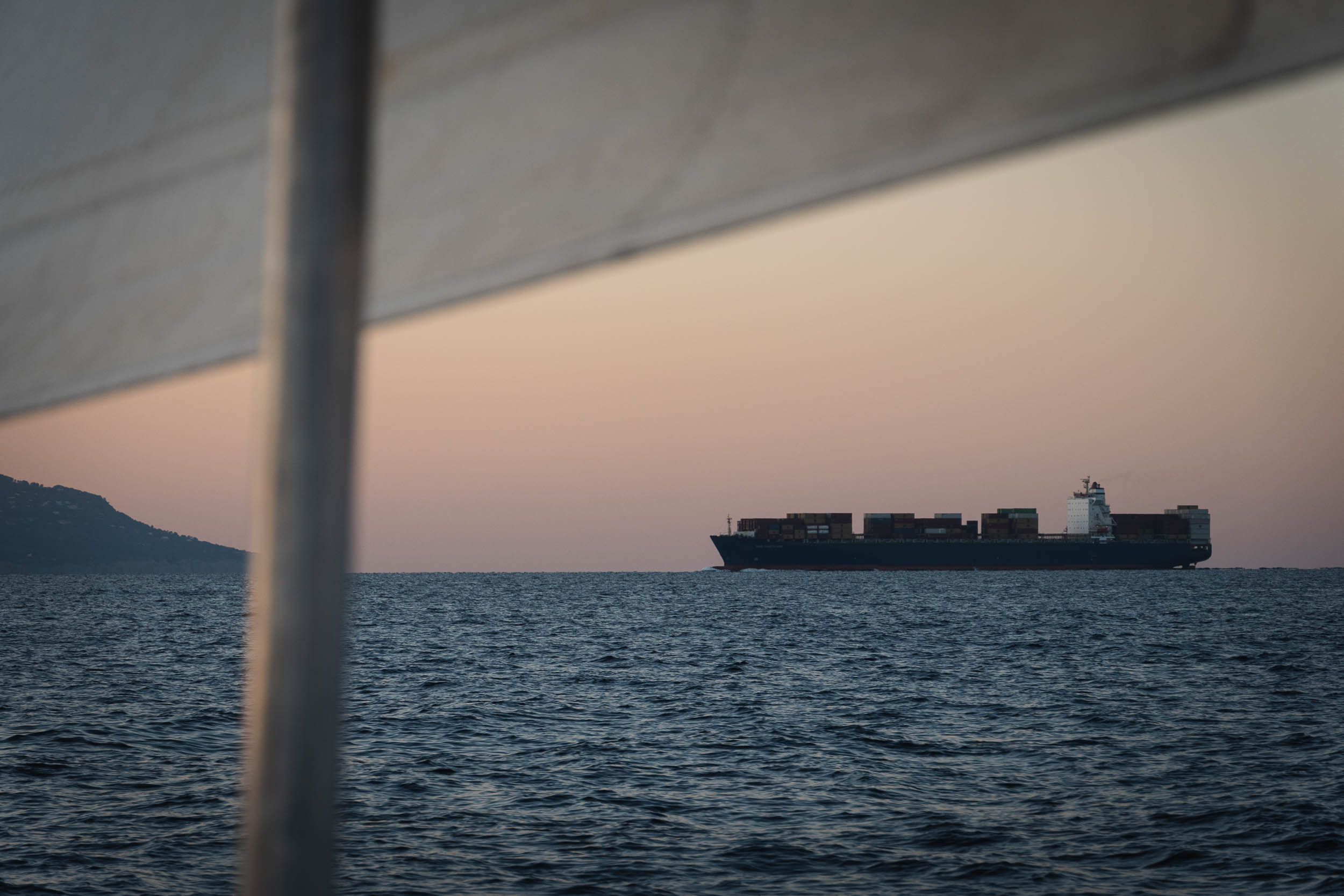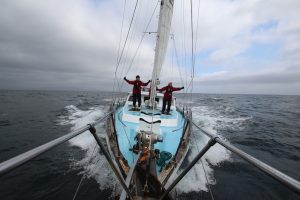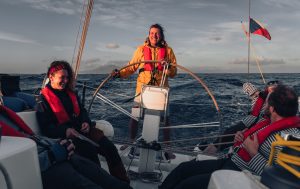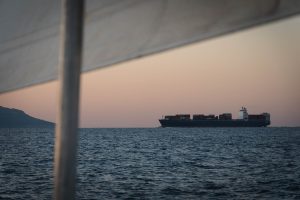“Most fail basic COLREGs 101” – that’s a bold statement. Yet from my instructor’s experience, most Day Skipper candidates initially struggled with understanding COLREGs. Unfortunately, Coastal Skippers did not improve the stats that much either. Even some Yachtmasters struggled. And to let you in on a little secret, I know a principal of a sailing school who got it wrong too.
So, what is it about Collision Regulations that makes us struggle?
COLREGs (International Regulations for Preventing Collisions at Sea) are the “rules of the road” for vessels. While the full text is quite complex, the basic principles are straightforward. Understanding them is essential—like knowing traffic rules when driving.
The point of COLREGs is that if everyone acted predictably, there would be no collisions.
Let’s break it down into our short, simple, and actionable framework: COLREGs 101.
Disclaimer: This article simplifies the COLREGs for educational purposes and is not a substitute for the official regulations. Readers are strongly advised to consult the full text of the COLREGs (link) to ensure compliance. In cases where this article deviates from the official rules, the COLREGs take precedence. The author and publisher cannot accept any responsibility for actions taken based on this content.
The COLREGs 101 Framework
Summed up: 1. Keep a lookout, 2. Assess if there is a risk of collision, and if so, 3. Figure out whether you must stand on or give way.
To start off, COLREGs state that while these rules apply to all vessels in open waters and in sight of one another, you must also use common sense and good seamanship to address your specific situation. (Rule 1, 2 & 11)
1. Lookout (Rule 5) 🔭
When you are underway (meaning not tied to land—docked, anchored, etc.), you must keep a constant lookout for other traffic. 360°, 24/7. Mind those blind spots, especially when sailing!
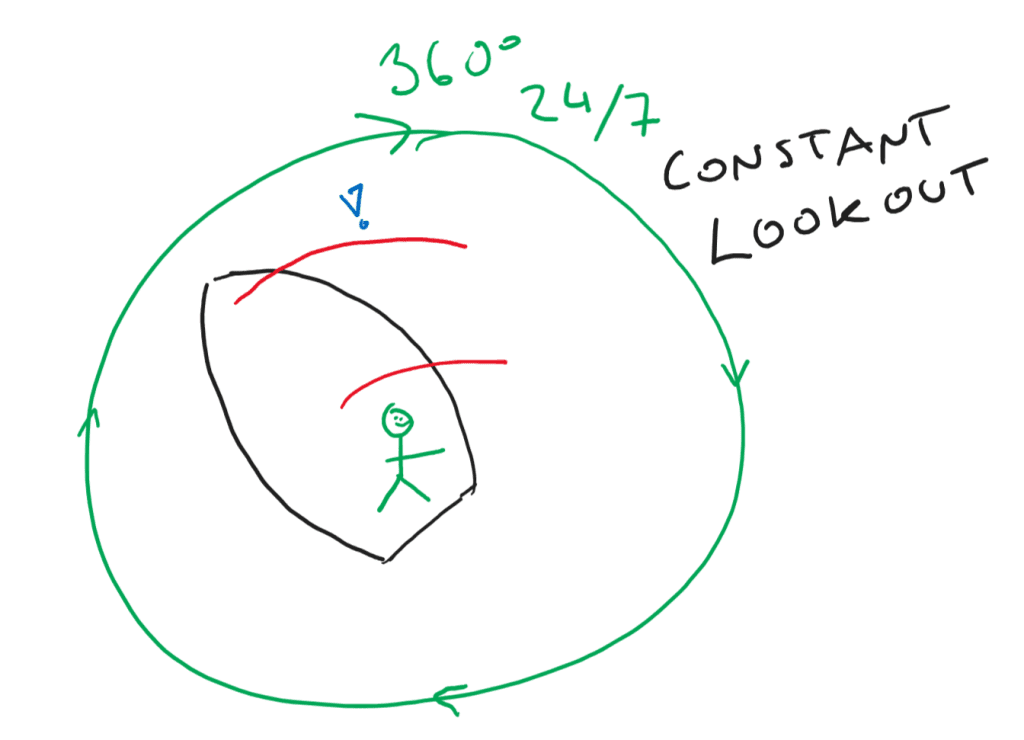
2. Risk of Collision? (Rule 7) 🚨
When you spot another vessel, assess if you are on a collision course. If the relative angle doesn’t change and you’re getting closer, a collision is likely. Use a hand-bearing compass or align the vessel with a fixed point on your boat to check. (Provided you don’t move around the deck and keep a constant heading!)
If there is not a risk of collision, keep monitoring.
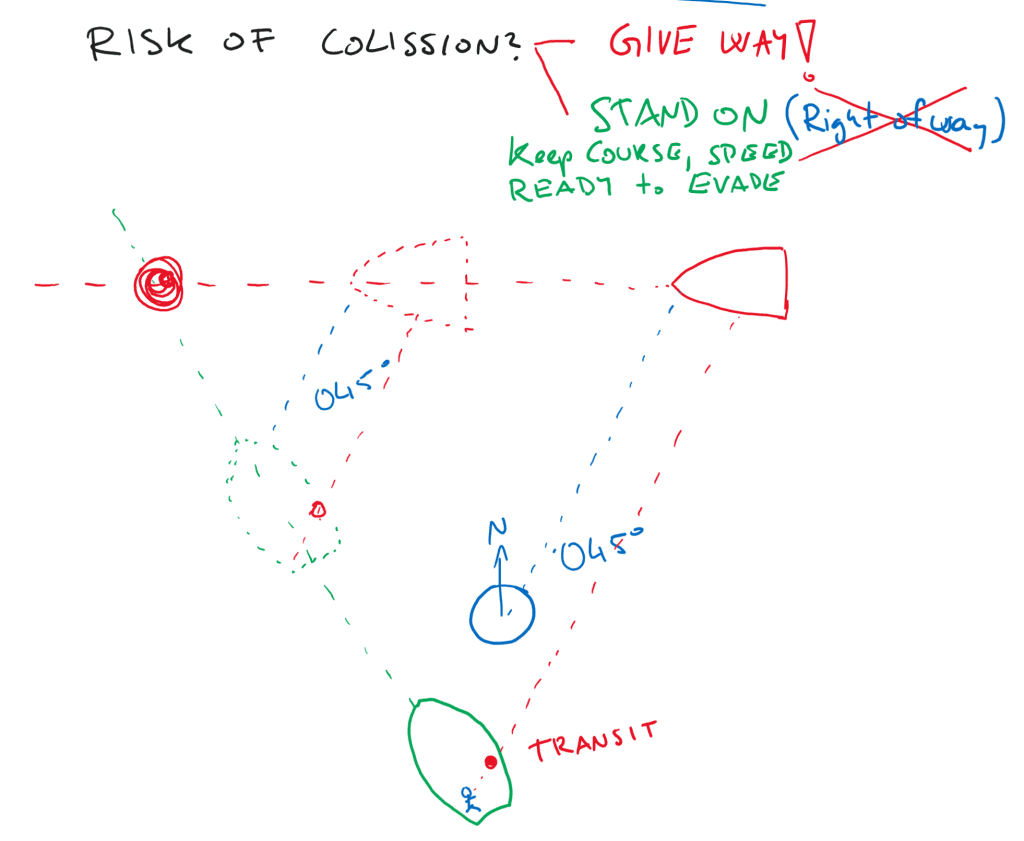
3. Give Way, or Stand On. (Rules 8, 16, and 17) 🚦
If there is a risk of collision, one vessel must Give Way, and the other must Stand On.:
- Give Way Vessel: Change course and/or speed early, clearly, and safely to avoid the other vessel.
- Stand-On Vessel: Maintain course and speed (be predictable!) but prepare to act if the give-way vessel doesn’t. In that case you must prevent collision at all costs! (there is no “right of way”)
Who Gives Way? (Rule 18)
Vessels follow a hierarchy:
- Power-Driven Vessels 🚢 give way to all others. (Regardless of size & purpose – sailboat under power, a commercial passenger ferry, a 300m long tanker all fall in this category by default)
- Sailing Vessels ⛵ give way to everyone but Power-Driven Vessels. This means: Fishing Vessels, Restricted in their Ability to Manoeuvre, and Not Under Command. Vessels Towing and Constrained by Draught are a bit special, but to keep it simple, let’s throw them in this bucket as well.
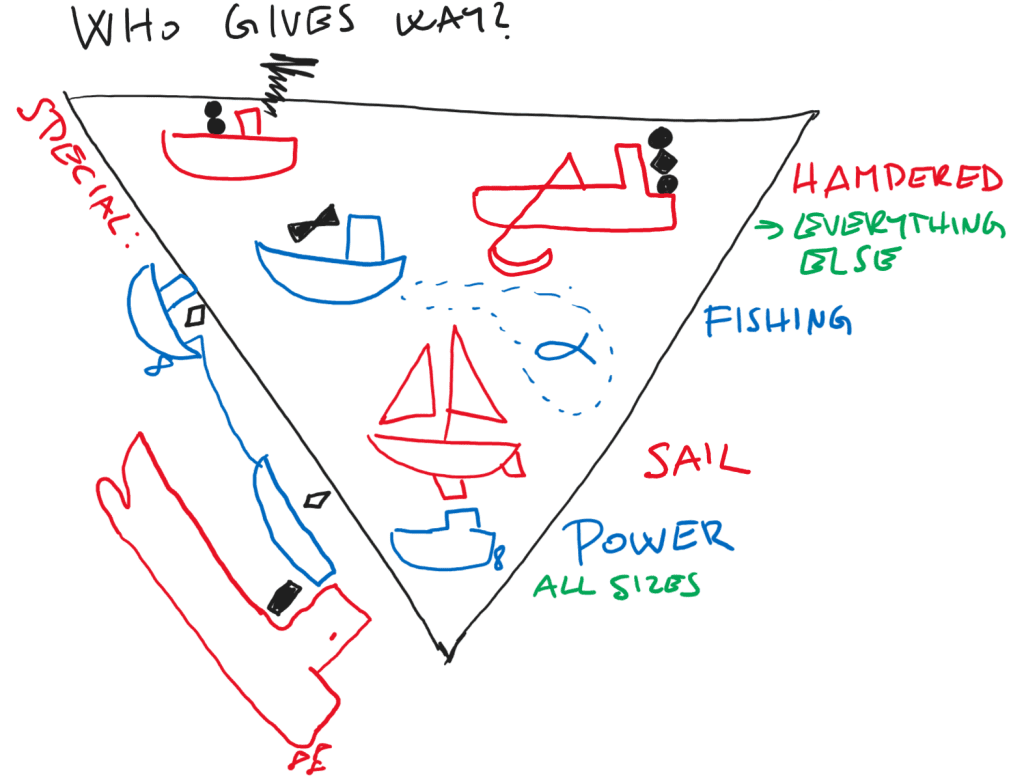
If you paid attention, you are about to ask: “But what happens if you meet a boat that’s on the same level as you?”
Power Meets Power (Rules 14 & 15) ⛴️ 🚤
- Head-on: Both turn to starboard.
- Crossing: The vessel with the other on its starboard side gives way.
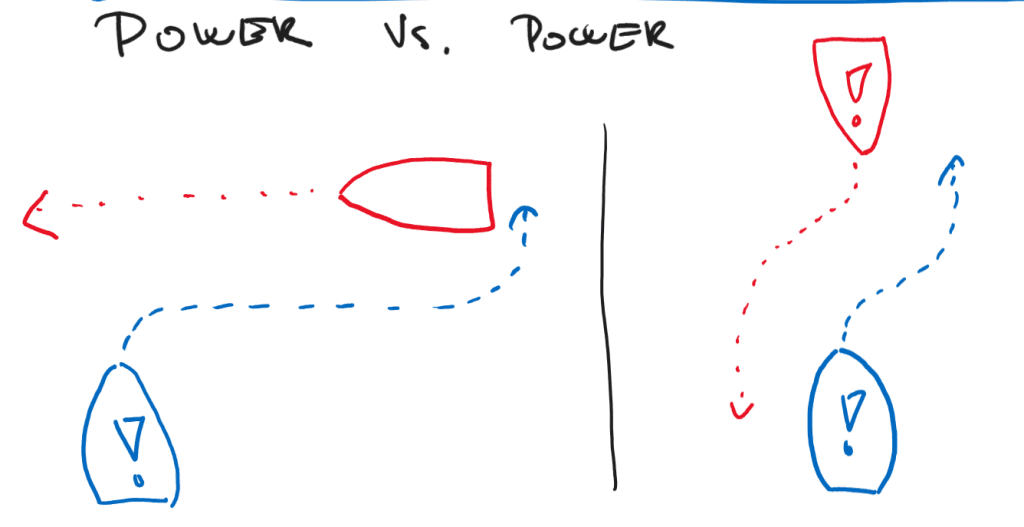
Sail Meets Sail (Rule 12) ⛵ ⛵
Forget what you think you know; there are only two simple rules:
- Port Tack Gives Way to Starboard Tack. If a sailboat with the wind on the port side (Port Tack vessel) meets another sailboat with the wind on their starboard side (Starboard Tack vessel), the Port Tack vessel gives way. Add drawing.
- If Both Have Wind on the Same Side: The Windward Vessel gives way to the Leeward Vessel.
(There is actually a third rule, but don’t worry about it at this level.)
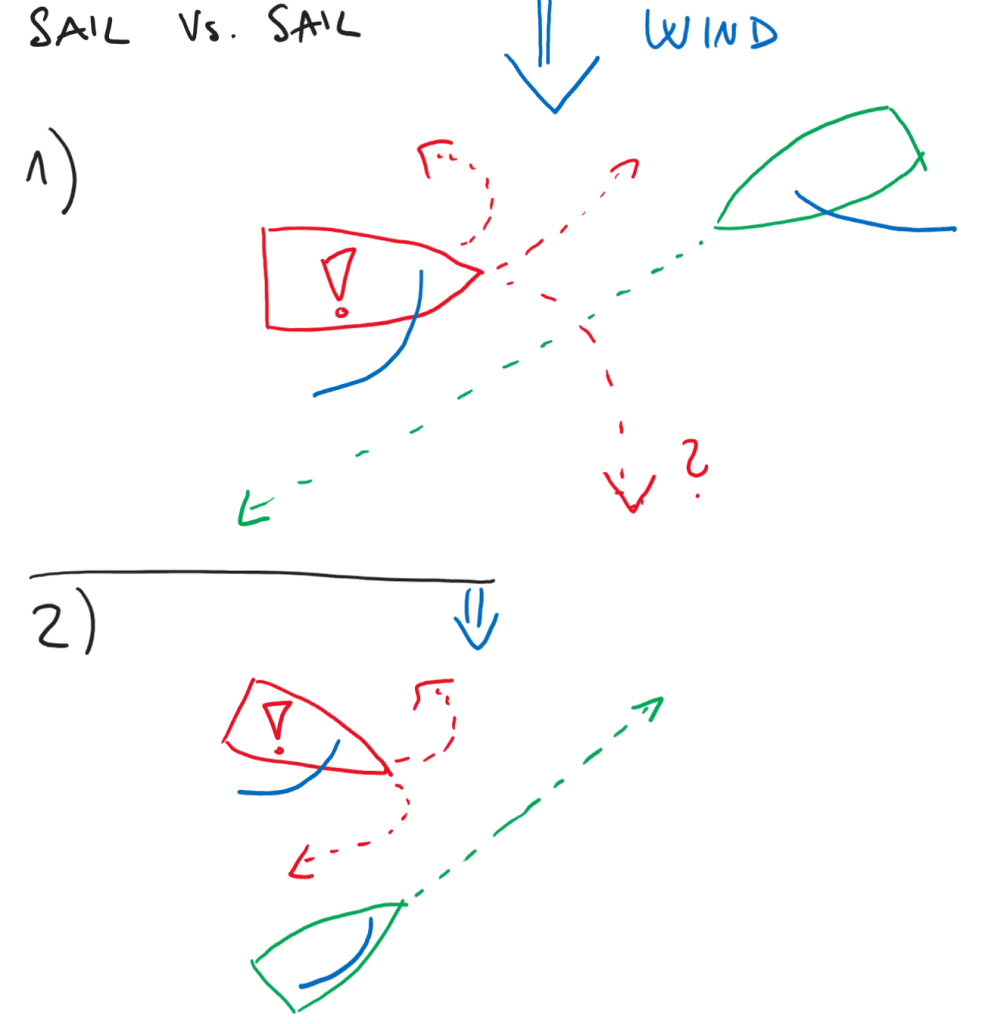
Overtaking (Rule 13) ⛵⬅️⛴️
The overtaking vessel needs to keep out of the way of the overtaken vessel. The overtaken vessel should remain predictable (keep course and speed).
A situation is classed as overtaking when one vessel is approaching the other from behind, roughly where the stern light would be visible.
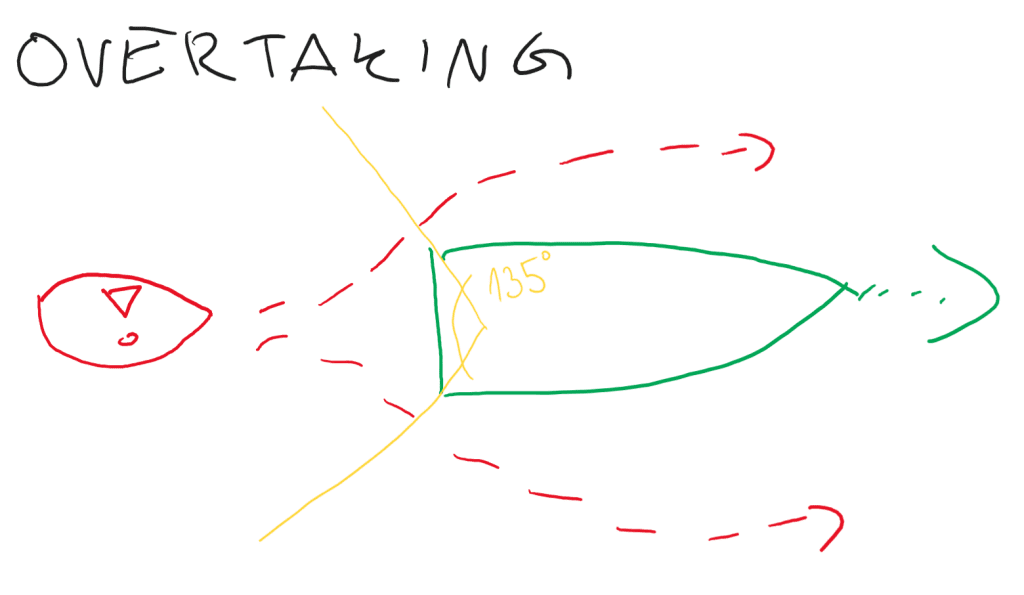
Final Thoughts
That’s it, folks! 🔭 Keep a lookout, 🚨 assess collision risks, and 🚦 know when to give way or stand on.
Now, a couple of additional points:
We said that these rules apply to open sea. Special rules may apply in some harbours and rivers – always check.
Also, and this is important, there are special rules for traffic lanes ⛴️🛳️🚢 —Narrow Channels, and Traffic Separation Schemes (Rules 9 & 10). To put it simply—do not impede any vessels using these lanes. In the case of TSS, avoid them altogether. 🛑 If you must cross them, do it perpendicularly and give way to everything that moves.
For restricted visibility, there are special rules – beyond the scope of this introduction.
Thank you for joining me in breaking down the COLREGs key rules. Did you learn something new, or was this all familiar territory? What questions do you have? Let us know in the comments below!
I admittedly rather enjoy reading into the COLREGs during winter evenings by the fire with a glass of good peated scotch in hand. If you’re eager to dive deeper, stay tuned for an in-depth guide to the full regulations. We’ll also address common misconceptions sailors face and offer a quiz to test your understanding. See you next time!
Nailed COLREGs 101 key rules, but still unsure about the best course for you? Take our quiz to find out!
